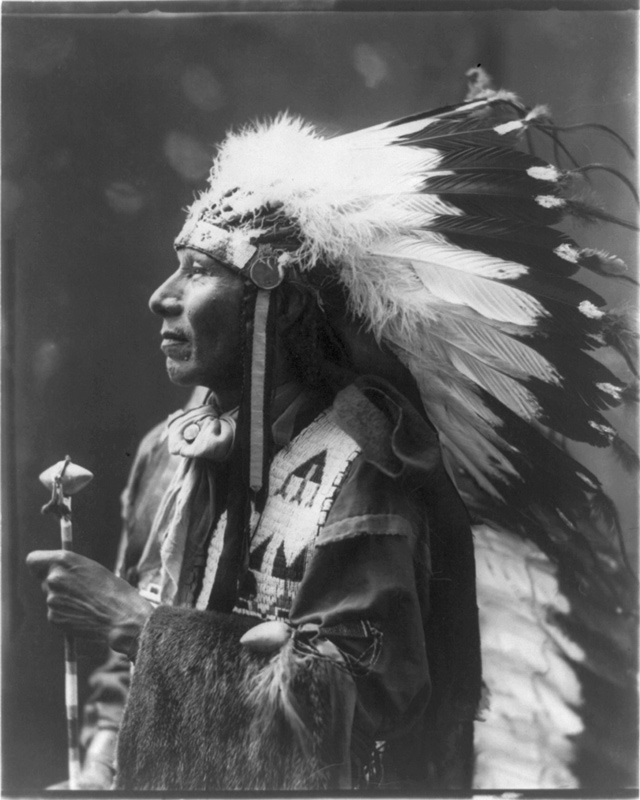A Unique Identity
When Ponca Chief Standing Bear traveled with 65 people to bury his eldest son on ancestral Ponca land, he was arrested by the U.S. Army. Standing Bear proved to be a gifted orator and with the help of two pro bono lawyers, successfully argued his release and continued his quest. Standing Bear v. Crook was a landmark case establishing for the first time that American Indians possessed civil rights. Afterwards, Standing Bear, aided by journalist Thomas H. Tibbles and the latter’s future wife, Susette (Bright Eyes) La Flesche, toured the country telling of the mistreatment of the Ponca. Due to the resulting public concern, some of the Ponca homelands were returned to the nation in 1881.[1]Donald N. Brown and Lee Irwin, Handbook of North American Indians: Plains Vol. 13, ed. Raymond J. DeMallie (Washington, D.C.: Smithsonian Institution, 2001), 426; Frederick Webb Hodge, Handbook of … Continue reading
When trying to obtain an exclusive license to trade with the Ponca, wealthy St. Louis landholder and trader Don Santiago Clamorgan, also known as Jacques Clamorgan, appealed to Lieutenant Governor Zenon Trudeau arguing that the Ponca license should go to whomever owns the license for the Omahas, that is, himself. In the previous year, Governor Baron de Carondelet had granted Jean Munier exclusive trading rights to the Ponca after the latter claimed that he “was the first to discover and pacify” the Ponca tribe.[2]Petition of Juan Munier, September, 1793 in Before Lewis and Clark: Documents Illustrating the History of the Missouri 1785–1804, ed. A. P. Nasatir, Bison Books edition. (Lincoln: University of … Continue reading
On behalf of Clamorgan, Trudeau petitioned his boss Carondelet to revoke Munier’s license, have him arrested, and grant Clamorgan the exclusive license. In his decision, Carondelet declared that the Ponca and Omaha were one nation: “concerning the falsity with which Juan Meunier has pretended that he has discovered the Poncas nation when it is verified and your informes corroborate that you have considered the ‘so-called’ Ponca nothing but a part of the refugee Mahas, and by allowing the division of this trade . . . would be detrimental to the commerce of Illinois.”[3]Carondelet to Trudeau, May 17, 1794, in Nasatir, 212–13.
Such were the intrigues of the fur trade prior to the expedition. More than Spanish governors bought Trudeau’s line. Influential ethnographer Frederick Webb Hodge writing the Smithsonian Institution’s authoritative 1910 Handbook of North American Indians North of Mexico stated, “The early history of the tribe is the same as that of the other tribes of the [Dhegiha] group, and, after the first separation, is identical with that of the Omaha.”[4]Hodge, 2:278, emphasis added. The early history of the tribe does suggest that the Ponca were a clan within a larger group of Dhegiha-speaking people now separated into distinct nations: Omahas, Poncas, Osages, Kansa, and Quapaws. Contrary to Carondelet’s informants and Hodge, linguistic and cultural evidence supports that after the split, the Ponca were a separate tribe.[5]Brown and Irwin, 416.
Ponca House
Clamorgan, given the license to trade with the Ponca and now in his role as director of the newly formed Missouri Company, wrote a lengthy set of instructions for Jean-Baptiste Truteau (not to be confused with Trudeau). He was to ascend the Missouri to establish a post at the Knife River Villages, fix “very high prices on everything,” document the native nations, locate the Rocky Mountains, and if possible, establish friendly relations with those living west of those mountains.[6]Clamorgan’s Instructions to Truteau, St. Louis, June 30, 1794 in Nasatir, 243–245. In present-day South Dakota, the Sioux forced him to retreat. He ended that retreat a few miles upstream from a Ponca village, built Ponca House, and settled in for the winter. On establishing Ponca House, Truteau wrote:
I and my men are very much chagrined at not having been able to go to the nations where we had set out to go in the autumn, by the meeting of the Sioux and the flight of the Arikaras which had most contributed to our giving up.
. . . .
I stopped in the neighborhood of ten leagues above the village of the Poncas, knowing that this nation at this season was away hunting wild cows [buffalo] and the Sioux never came to hunt on their territory, being their enemies. It was the 4th of November, when we chose a place for a winter home wishing ourselves to be well fortified against the attacks of the savages.[7]Journal of Truteau on the Missouri River, 1794–1795 in Nasatir, 279–80.
When winter ended, Truteau would try again, this time reaching the Arikara where he met with the Cheyenne and sent gifts to the Mandan via fellow traders Menard and René Jusseaume. Although Truteau’s specific travels during this period are impossible to pin down, Truteau collected a wealth of information about the Upper Missouri, Missouri Indians, and Yellowstone River. Excerpts of his journal were sent to Lewis by Thomas Jefferson on 16 November 1803. It is likely the captains also learned this information from interviews with traders in St. Louis and Illinois.[8]Nasatir, 87–91; Jefferson to Lewis, in Letters of the Lewis and Clark Expedition with Related Documents: 1783-1854, 2nd ed., ed. Donald Jackson (Urbana: University of Illinois Press, 1978), … Continue reading
Encounters
On 5 September 1804, the captains sent John Shields and George Gibson to the Ponca villages near Ponca Creek and the mouth of the Niobrara. The privates reported that the people were away hunting buffalo and that they had not planted their gardens. Not having a crop in the ground before hunting was atypical of the Plains Village Tradition and was a signal of a tribe in distress. One of the towns they visited would likely have been Ponca Fort, a heavily fortified village that was abandoned around 1800.[9]Moulton, Journals, 3:50–51n4. Three days later, on 8 September 1804, the captains would note the abandoned site of Truteau’s Ponca House.
Tears and Renewal
In the 1800s, the Ponca tried to live within the treaty system of the United States. They signed their first treaty in June 1817 promising peace and acknowledging the protection of the United States. That protection was unable to stop the Teton Sioux from killing all of the Ponca chiefs returning from a visit at an Oglala village. Nor would subsequent treaties stop wars between tribes competing for dwindling resources due to Indian removals and shrinking boundaries. To make matters worse, the Sioux treaty of 1868 mistakenly gave Ponca lands to the Sioux. To correct the error, the government forced the Poncas to move from their home on the Niobrara River to lands near Baxter Springs, Kansas. The removal was a forced march under military escort, sometimes called the Ponca Trail of Tears, and resulted in suffering and death.
Finding the Baxter Springs location unsuitable, the Ponca were allowed to move to lands along the Arkansas and Salt Fork Rivers. The tribe split into two groups, the Northern Ponca and Southern Ponca. In 1881, the United States gave back 26,236 acres of their original homelands on the Niobrara, and approximately half the tribe returned. Starting in the 1970s, the Northern Ponca began a political reorganization. They were recognized as a federal tribe in 1990 and today, the Ponca Tribe of Nebraska is headquartered in Niobrara. The Ponca Tribe of Indians of Oklahoma is a federally recognized tribe headquartered in Ponca City, Oklahoma.[10]Brown and Irwin, 424–427; “Ponca,” Wikipedia, https://en.wikipedia.org/wiki/Ponca; “Ponca Tribe of Indians of Oklahoma,” Wikipedia, … Continue reading
Selected Pages and Encounters
September 8, 1804
Truteau's old trading house
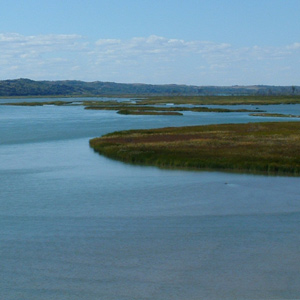

West of Pickstown, SD Winds are favorable and the boats make seventeen miles passing Jean Baptiste Truteau’s old trading house. They are now entirely within present-day South Dakota, and George Shannon is still missing.
August 31, 1804
Yankton speeches
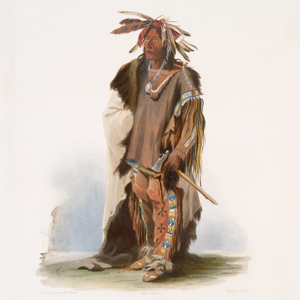

Yankton, SD In the morning, the council with the Yankton Sioux continues. Several Sioux give speeches, and Clark and Ordway take notes. Dorion is assigned a diplomatic mission and leaves with the Yanktons.
June 14, 1804
Gobbling snakes
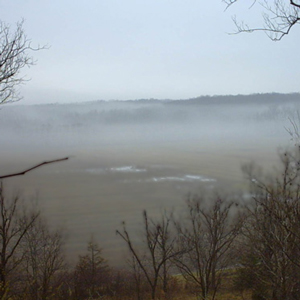

The morning is foggy as the boats leave the Grand River, and they make only eight miles up the Missouri. They meet four traders loaded with furs, and Drouillard hears snakes that gobble like turkeys.
September 5, 1804
No Preserve Island
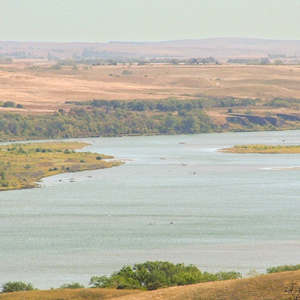

No Preserve Island, NE-SD After making 13¾ miles up the Missouri, the boats stop early at No Preserve Island. There, they make a new cedar mast for the barge. Lewis describes the bull snake and adds two plant specimens to his collection.
July 10, 1804
Tall-grass prairie
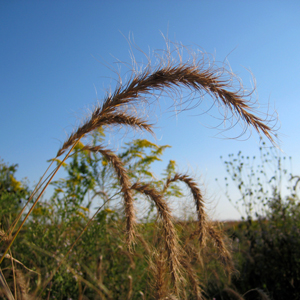

The lost hunters return, and they all continue up the Missouri. As they approach the present Nebraska-Kansas border, they see a large prairie of Canada wild rye and Indian potato growing on an island.
September 4, 1804
Shannon still missing
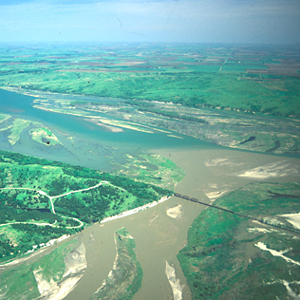

Niobrara River, NE The barge’s sail is hoisted in a strong wind and the mast breaks. After eight miles, the expedition stops at the Niobrara River to explore, hunt, and look for signs of George Shannon who has been missing several days.
Too Né’s Delegation
by Joseph A. Mussulman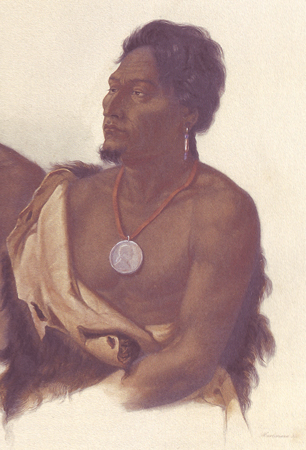

A delegation of chiefs from the Arikara, Ponca, Omaha, Otoe, Iowa, and Missouria nations sailed down the Missouri with Corporal Warfington on the expedition’s keelboat in the spring of 1805. Early in January, 1806, President Jefferson greeted them in Washington City with a formal speech.
Notes
| ↑1 | Donald N. Brown and Lee Irwin, Handbook of North American Indians: Plains Vol. 13, ed. Raymond J. DeMallie (Washington, D.C.: Smithsonian Institution, 2001), 426; Frederick Webb Hodge, Handbook of American Indians North of Mexico, Vol. 2 (Washington: Smithsonian Institution Bureau of American Ethnology, Government Printing Office, 1910), 633.; “Standing Bear,” Wikipedia, https://en.wikipedia.org/wiki/Standing_Bear accessed on 25 January 2021. |
|---|---|
| ↑2 | Petition of Juan Munier, September, 1793 in Before Lewis and Clark: Documents Illustrating the History of the Missouri 1785–1804, ed. A. P. Nasatir, Bison Books edition. (Lincoln: University of Nebraska Press, 1990), 195. |
| ↑3 | Carondelet to Trudeau, May 17, 1794, in Nasatir, 212–13. |
| ↑4 | Hodge, 2:278, emphasis added. |
| ↑5 | Brown and Irwin, 416. |
| ↑6 | Clamorgan’s Instructions to Truteau, St. Louis, June 30, 1794 in Nasatir, 243–245. |
| ↑7 | Journal of Truteau on the Missouri River, 1794–1795 in Nasatir, 279–80. |
| ↑8 | Nasatir, 87–91; Jefferson to Lewis, in Letters of the Lewis and Clark Expedition with Related Documents: 1783-1854, 2nd ed., ed. Donald Jackson (Urbana: University of Illinois Press, 1978), 136–140. |
| ↑9 | Moulton, Journals, 3:50–51n4. |
| ↑10 | Brown and Irwin, 424–427; “Ponca,” Wikipedia, https://en.wikipedia.org/wiki/Ponca; “Ponca Tribe of Indians of Oklahoma,” Wikipedia, https://en.wikipedia.org/wiki/Ponca_Tribe_of_Indians_of_Oklahoma both accessed 25 January 2021. |
